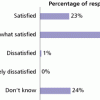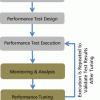Strategic advice to leverage new technologies
Technology is at the heart of nearly every enterprise, enabling new business models and strategies, and serving as the catalyst to industry convergence. Leveraging the right technology can improve business outcomes, providing intelligence and insights that help you make more informed and accurate decisions. From finding patterns in data through data science, to curating relevant insights with data analytics, to the predictive abilities and innumerable applications of AI, to solving challenging business problems with ML, NLP, and knowledge graphs, technology has brought decision-making to a more intelligent level. Keep pace with the technology trends, opportunities, applications, and real-world use cases that will move your organization closer to its transformation and business goals.
Recently Published
Hadoop is receiving a lot of attention from data mining and predictive analytics practitioners because it offers a scalable platform for building, training, and testing models that can be executed in parallel using massive volumes of data, as opposed to typical data mining practices involving the use of sample data sets for m
Big Data in the Enterprise: Part II -- More on Hadoop
BI Product Owners Love an Agile PMO!
Product owners for Agile BI teams often face unique challenges compared to their peers on other functionally specific delivery teams.
Agile Performance Testing Lifecycle
The strategic goals, vision, and mission statements of today's organizations emphasize the importance of customer satisfaction, not only in terms of functionality but also in terms of quality of service (QoS). One of many QoS parameters for an application is performance. The performance of any system refers to how well the system is able to handle the user load in terms of application response and system resources.
Embedding Agile
EA, Agility, and Mess Management
For a long time, the predominant business assumption was that specialization (around markets and business functions) was the right approach to complexity (divide and conquer), efficiency, and market responsiveness (closer knows best). In a divide-and-conquer paradigm, the "pipes and filters" pattern -- with islands (or silos) of information processing, decision making, and action, and "pipes" or information buffers between -- works well enough organizationally and for the technology firmament supporting that mode of business operation.
There is no escaping the talk (and rhetoric!) about Big Data. Vendors are peddling Big Data solutions; consulting firms employ Big Data specialists to help you with your Big Data projects; universities offer Big Data courses; Big Data conferences are aplenty; and tech journalists, magazines, and even blogs are buzzing about the Big Data revolution. This is great, especially after the Great Recession we just endured. We welcome any excitement about technology buzzwords!
Closing the Loop: State of the Art in Business Process Analytics
In recent years, the concept of business process management (BPM) has been gaining traction in modern enterprises and institutions. Broadly put, the management field aims to provide an encompassing approach in order to align an organization's business processes with the concerns of every involved stakeholder.












